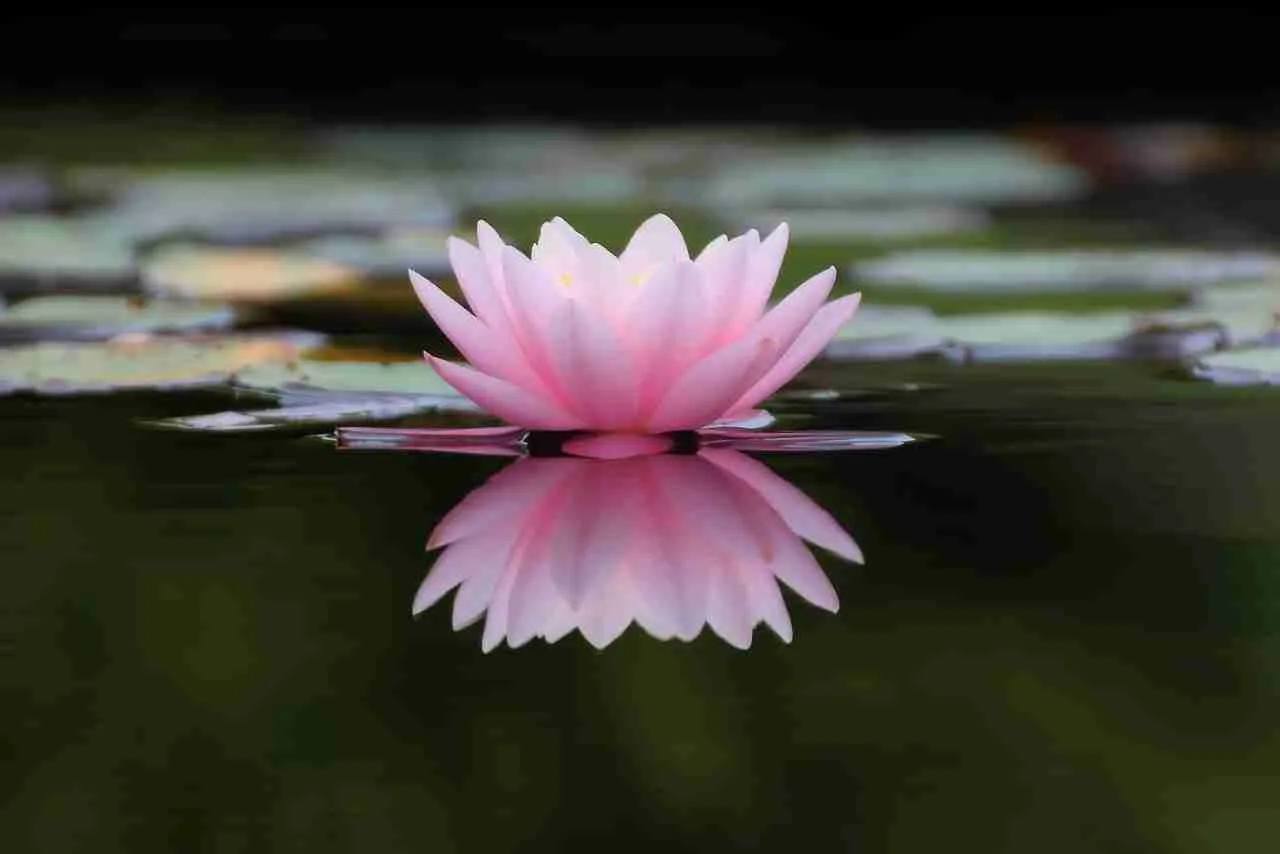Are you curious about the essential components that make up a Zen garden? Well, look no further! This article will explore the fundamental elements that create the serene and harmonious atmosphere of a Zen garden. From carefully placed rocks to meticulously raked gravel, each element plays a vital role in creating a space for relaxation and contemplation. So, let’s embark on a journey to discover the key elements that make a Zen garden a haven for tranquility.

Understanding Zen Garden
A Zen garden, also known as a Japanese rock garden or dry landscape garden, is a meticulously designed space that embodies simplicity, tranquility, and natural beauty. The concept and philosophy behind Zen gardens have their roots in Zen Buddhism, emphasizing the connection between nature, mind, and spirit. These gardens are meant to evoke a sense of serenity, contemplation, and harmony. By incorporating various elements and principles, Zen gardens offer a space for meditation and self-reflection.
Concept and Philosophy of Zen Gardens
The concept of Zen gardens revolves around the understanding that nature is an essential source of inspiration and tranquility. Zen Buddhism teaches the importance of being present in the moment and finding inner peace. The philosophy behind Zen gardens is to create a harmonious environment that reflects the serene beauty of nature. These gardens aim to evoke a sense of calmness and mindfulness, where one can escape the chaos of the outside world and find solace in the simplicity of the design.
History and Origin of Zen Gardens
Zen gardens originated in Japan during the Muromachi period (1336-1573). The Zen monks initially created these gardens as an extension of their meditation halls. They sought to capture the essence of the natural landscape in a confined space. Zen gardens were inspired by China’s tradition of miniature landscapes and evolved over time to become a distinct Japanese art form. The use of rocks, sand, and gravel in Zen gardens symbolizes the mountains, islands, and rivers found in nature. These gardens were designed to provide a space for meditation, contemplation, and self-reflection for both monks and visitors.
Types of Zen Gardens
Zen gardens come in various types, each with its unique characteristics and design principles. The most common types include the karesansui (dry landscape) garden, the chaniwa (tea garden), and the tsubo-niwa (small courtyard garden).
The karesansui garden, also known as the rock garden, is the most iconic representation of a Zen garden. It typically consists of carefully raked gravel or sand, symbolizing water, and strategically placed rocks, symbolizing mountains. These gardens are designed to evoke a sense of tranquility and invite contemplation.
Chaniwa, or tea gardens, are often found adjacent to traditional Japanese tea houses. They are designed to create a serene and intimate setting for the Japanese tea ceremony. Chaniwa gardens typically feature stepping stones, lanterns, and carefully selected plants, creating a harmonious blend of nature and architecture.
Tsubo-niwa gardens are small, courtyard-style gardens found in urban areas where space is limited. These gardens are designed to create a peaceful retreat within the confines of a small space. They often incorporate elements of the karesansui garden, such as rocks and gravel, along with carefully chosen plants and water features.

Zone of Tranquility
Tranquility is a fundamental aspect of Zen garden design. Its importance lies in creating an environment that encourages inner peace and contemplation. There are various elements that contribute towards the overall tranquility of a Zen garden.
One element is simplicity. Zen gardens embrace minimalism, avoiding excessive ornamentation that may distract from the sense of calmness. By keeping the design clean and uncluttered, the mind is encouraged to focus on the present moment and find solace in simplicity.
Another crucial element is balance. Zen gardens strive to achieve a sense of harmony and equilibrium between different elements. The arrangement of rocks, sand, gravel, plants, and water features is carefully considered to create a visually pleasing and psychologically soothing atmosphere.
Additionally, incorporating natural materials is essential in creating a tranquil Zen garden. The use of wood, stone, bamboo, and other organic materials connects the garden to nature, reinforcing the sense of serenity. The textures and colors of these natural materials also play a vital role in evoking a feeling of peace and tranquility.
Methods such as appropriate lighting and soundscaping can further enhance the tranquility in a Zen garden. Soft, diffused lighting can create a serene ambiance, while the gentle sound of trickling water or rustling leaves can help drown out distracting noises and induce a state of relaxation.
Preserving tranquility requires regular maintenance and care. Removing debris, trimming plants, and ensuring a clean and clutter-free environment are crucial. By maintaining a peaceful atmosphere, one can fully appreciate the serenity and tranquility of a Zen garden.
Sand and Gravel
The use of sand and gravel is a distinctive feature of Zen gardens. These elements carry symbolic meaning and contribute to the overall aesthetic and atmosphere.
In Zen gardens, sand is often raked to create patterns, representing flowing water or ripples on a pond’s surface. The act of raking the sand is considered a meditative practice, promoting mindfulness and concentration. As the patterns are created and erased, they remind us of the impermanence of life and the need to embrace each moment.
The color and texture of sand also play a significant role in Zen gardens. White sand represents purity and simplicity, creating a calm and serene atmosphere. On the other hand, gray or gold-colored sand can symbolize a rugged landscape, evoking a sense of solitude and contemplation.
Gravel is another element commonly found in Zen gardens. It is often used to represent the bed of a dry river or a pathway through the garden. The sound of gravel crunching underfoot adds to the sensory experience, further enhancing the overall tranquility.
Maintenance of sand and gravel is crucial to preserve the intended design of a Zen garden. Raking the sand regularly helps maintain its texture and pattern, while removing debris from the gravel ensures a clean and well-maintained appearance.

Rocks and Stones
Rocks and stones are fundamental elements in Zen garden design. They hold deep symbolism and are strategically placed to create a sense of balance and harmony.
In Zen philosophy, rocks represent stability, permanence, and the unchanging nature of the universe. They are often arranged in groups, referred to as “islands” or “mountain ranges,” to evoke a sense of being in a vast natural landscape. The careful placement of rocks creates a visual focal point and draws the eye to different areas of the garden, encouraging exploration and contemplation.
Selecting the right rock types is crucial in creating an authentic Zen garden. Rocks with unique shapes, textures, and colors are preferred, as they add interest and visual appeal. Common rock choices include granite, limestone, and quartz. Japanese gardens often incorporate locally sourced rocks to maintain an authentic connection to the surrounding landscape.
The interaction between rocks and sand/gravel is an essential aspect of Zen garden design. Rocks are positioned partially buried in the sand or gravel to create a harmonious contrast between solid and soft elements. This juxtaposition symbolizes the dynamic relationship between the permanence of rocks and the fluidity of water or nature.
Boulders and Mountain Representations
Boulders have a significant presence in Zen gardens, symbolizing strength, endurance, and the majesty of nature. Unlike smaller rocks, boulders are usually placed individually and serve as focal points within the garden.
The choice and positioning of boulders are essential in creating a visually appealing and balanced composition. Boulders with unique shapes and textures are favored, as they add character and interest to the garden. Their placement is carefully considered to create a sense of naturalness and to mimic the presence of mountains in the landscape.
Creating illusions of mountains is an art form in Zen garden design. By using a combination of rocks, sand, and gravel, garden designers can replicate the grandeur and majesty of mountains on a smaller scale. The careful arrangement of different-sized rocks, along with strategic grading of the sand or gravel, creates the illusion of varying elevations and slopes. This technique adds depth and perspective to the garden, enhancing the overall aesthetic and providing a sense of awe and contemplation.
Water Elements
Water holds immense importance in Zen gardens, symbolizing purity, clarity, and life force. It is both a physical and symbolic element that adds tranquility and serenity to the garden.
In Zen gardens, water can be represented by actual water features, such as ponds, waterfalls, or streams. These features create a soothing atmosphere, with the sound of running water adding to the overall sense of calm and relaxation. The reflections of rocks, plants, and surrounding elements in the water’s surface provide a visually captivating experience.
Symbolic representations of water are also incorporated into Zen gardens. Raked sand is often used to represent water, with patterns resembling waves or ripples carefully created and maintained. This symbolic representation encourages meditation and contemplation on the fluid nature of life and the impermanence of all things.
Incorporating water elements requires careful planning and maintenance. Proper water circulation and filtration are crucial for maintaining water clarity and preventing stagnation. Regular cleaning and upkeep of ponds, waterfalls, and streams ensure that the water remains a vibrant and harmonious element within the garden.
Plants and Trees
Greenery plays a vital role in Zen gardens, adding life, color, and a sense of harmony to the overall design. Carefully selected plants and trees can enhance the tranquility and natural beauty of the space.
In Zen gardens, plants are chosen for their aesthetic appeal and their ability to evoke a sense of calmness. These gardens often feature evergreen plants, such as mosses, ferns, and low-growing shrubs, which provide year-round interest and require minimal maintenance. The use of plants with soft textures and gentle forms creates a soothing atmosphere, while carefully placed bursts of color can add visual interest without overwhelming the senses.
Trees are also important in Zen garden design, representing longevity, strength, and connection to nature. In traditional Japanese gardens, small and medium-sized trees such as Japanese maple, pine, or cherry blossoms are commonly used. These trees are carefully pruned and shaped to maintain a balance between natural form and human intervention, symbolizing the harmony between man and nature.
When selecting plants and trees for a Zen garden, it is essential to consider their setting and overall design. Plants should be chosen based on their ability to thrive in the specific climate, soil conditions, and available sunlight. Thoughtful placement and grouping of plants can create visual interest and balance within the garden.
Structures and Pathways
In addition to natural elements, Zen gardens often incorporate structures and pathways that enhance the overall design and add a sense of purpose to the space.
Gates, bridges, and stairs are commonly featured in Zen gardens, serving both functional and symbolic purposes. Gates act as transitional elements, marking the boundary between the outside world and the tranquil space within the garden. Bridges provide a connection between different areas of the garden and symbolize the journey and transition through life. Stairs represent the ascent to higher levels of understanding and enlightenment.
The design of path surfaces and borders is carefully considered to create a harmonious flow and guide visitors through the garden. Paths are often made of compacted gravel, stepping stones, or wooden planks, offering a tactile experience as one walks through the garden. The curvature and layout of paths contribute to the overall aesthetic and encourage exploration and contemplation.
The significance of the journey in Zen philosophy is reflected in the deliberate placement of structures and pathways within the garden. Each step along the path is meant to be savored and appreciated, allowing the visitor to fully immerse themselves in the tranquility and beauty of the garden.
Garden Accessories
Accessories play a significant role in enhancing the overall aesthetics and symbolism of Zen gardens. These carefully chosen elements add visual interest and contribute to the overall sense of tranquility.
Lanterns are a common accessory in Zen gardens, symbolizing enlightenment and providing warm, diffused lighting during the evening hours. Their placement along paths or near water features adds a touch of elegance and enhances the garden’s ambiance.
Statues and sculptures are often incorporated into Zen gardens to evoke a sense of presence and harmony. Buddha statues, in particular, symbolize enlightenment and spiritual awakening. The careful placement of statues within the garden allows visitors to reflect on their own spiritual journey and seek a deeper understanding of themselves.
Basins, called tsukubai, are essential elements in traditional Japanese gardens. They serve as a ritual cleansing area before entering a tea house and symbolize purification and humility. The arrangement of stones and the sound of trickling water in the basin create a calming and meditative experience.
When choosing and placing accessories in a Zen garden, it is essential to consider their size, material, and relationship to the surrounding elements. The goal is to create a harmonious composition where each accessory complements the overall design without overpowering the natural beauty of the garden.
Maintenance of Zen Gardens
Regular maintenance is essential to preserve the aesthetics and tranquility of a Zen garden. By caring for the plants, structures, and natural elements, the intended design can be upheld over time.
Regular care of plants involves pruning, weeding, and fertilizing as needed. By keeping the plants healthy and well-maintained, they can continue to contribute to the overall beauty and tranquility of the garden. Special care should be taken to ensure plants do not overgrow and disrupt the balance and harmony of the space.
Tools used for Zen garden maintenance include pruning shears, rakes, shovels, and watering cans. These tools allow for precise and careful maintenance, ensuring that the garden remains in peak condition.
Preserving the aesthetics of a Zen garden over time requires attention to detail. Regularly raking the sand or gravel to recreated patterns is essential, as it contributes to the meditative and peaceful atmosphere. Removing debris such as fallen leaves or twigs helps maintain cleanliness and orderliness. By addressing any signs of wear or damage to bridges, gates, or other structures promptly, the garden can retain its intended function and visual appeal.
In conclusion, Zen gardens offer a haven of tranquility and contemplation in the midst of the bustling world. Through the careful selection and arrangement of elements such as sand, rocks, water, plants, and accessories, these gardens create an atmosphere that encourages mindfulness and inner peace. By understanding the concept, philosophy, and design principles behind Zen gardens, one can create a serene and harmonious space that nurtures the mind, body, and spirit. Whether in a grand estate or a small courtyard, a Zen garden has the power to transport you to a place of tranquility and profound connection with nature.




